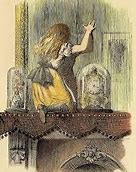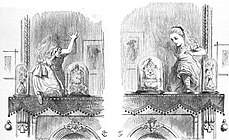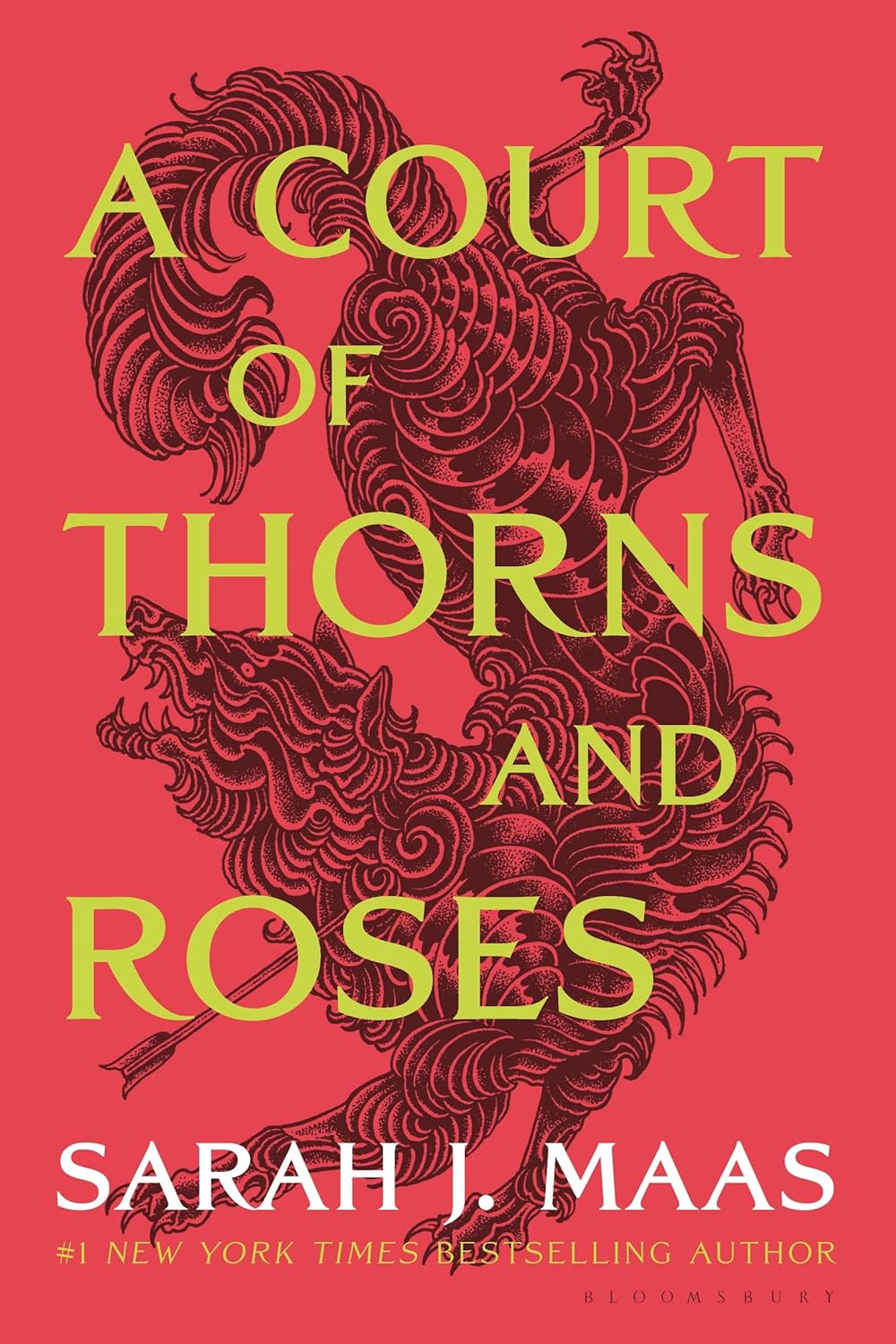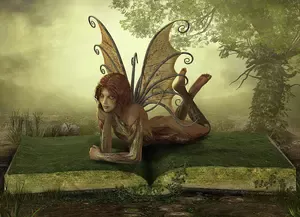- Home
- Fairy Blog
- Fairy Cakes
- Fairy Quotes
- Safety Dance
- The Flower Fairies Books
- What is a Fairy?
- Are Fairies Real?
- Elemental Fairies
- Faeries
- What are the Fae?
- Fae Fantasy Books
- Fairy History
- Origin of Fairies
- Fairies in Folklore
- Pixies
- Pixie Fairy Differences
- Gothic Fairies
- Tooth Fairy
- Fairy Festivals
- Fairy Gardens
- Fairy Garden Accessories
- Fairy Forests
- Fairy Poems
- Fairy Tales
- Fairy Tale Origins
- Classic Fairy Tales
- 24 Fairy Tales
- Fairy Tales around the World
- About Fantasy Creatures
- Dragons
- Dwarves
- Elves
- Gnomes
- Leprechauns
- Mermaids
- Unicorns
- Fairy Face Painting
- Free Fairy Art
- Fairy Coloring Pages
- Fairy Crafts For Kids
- Chinese Dragon Art
- How to Draw a Dragon
- Chinese Dragon Drawing
- Dragon Coloring Pages
- Fairy Tattoo Ideas
- About Us
- Contact Us
- Disclaimer
- Privacy Policy
Through the Looking Glass Meaning
Through the Looking Glass Meaning:
A Journey of Symbolism and Imagination
Through the Looking Glass Meaning is about the sequel to Lewis Carroll's "Alice’s Adventures in Wonderland," is a piece rich with symbolism, meaning, and imagination.
Beyond its surface as a children's story lies a world where logic is inverted and reality blends with fantasy. To fully appreciate its depths, we must explore the ornate layers of meaning, cultural influences, and philosophical undertones that Carroll intricately weaves throughout this fantastical narrative.
Amazon Audible Promo
With Amazon Audible’s holiday promo ($0.99/month for 3 months) and the release of Harry Potter: The Full-Cast Audio Editions, there's never been a better time to join.

The Looking Glass: A Portal to Other Realities
In "Through the Looking Glass," the mirror represents more than just a reflective surface—it's a gateway to another realm. This portal symbolizes the desire to transcend the ordinary, inviting curiosity and introspection about the world beyond what we see. The looking glass transforms into an entry point for a world where chessmen come alive, flowers talk, and time runs backward, challenging the constraints of our own reality. Its depiction encourages readers to examine the boundaries of perception and consider what lies beyond the veneer of reflection.
Cultural and Historical Roots of Mirror Symbolism
The notion of mirrors as mysterious thresholds dates back to ancient cultures, where they were linked to mythology and superstition. In Roman and Greek myths, mirrors held the power to reveal the soul and act as conduits to the divine. This historical backdrop enriches Carroll’s narrative, providing layers of meaning that extend beyond the storyline. By using the mirror as a portal, Carroll taps into a universal curiosity about the metaphysical and the unknown, creating a narrative that appeals to an innate human yearning for exploration and understanding.
Philosophical Themes: More Than a Child’s Tale
Delving into philosophical concepts, "Through the Looking Glass" offers reflections on identity, reality, and self-awareness. Carroll, a mathematician, infused logical paradoxes into his narrative, prompting readers to engage in deeper contemplation. The looking glass serves as a metaphor for self-exploration, where characters pose essential questions about existence and personal growth. This blending of whimsical storytelling with introspective themes makes the work resonate with audiences beyond its initial youthful target, inviting readers of all ages to ponder life’s complexities.
The Chessboard Motif: Life as a Strategic Game
Central to "Through the Looking Glass" is the chessboard motif, which encapsulates life’s strategy, order, and chaos. Alice’s journey across the chessboard mirrors the unpredictability of life, with each move symbolizing choices and consequences. Characters, represented as chess pieces, complete a game that mimics the pursuit of goals amidst obstacles and adversaries. This symbolism underscores the interplay between destiny and agency, urging readers to reflect on their own life paths and the moves they make along the way.
Mirrors in Diverse Cultural Narratives
Mirrors also feature prominently in narratives across cultures, lending universal significance to the "looking glass" theme. In Japanese folklore, mirrors serve as tools for communication with spirits, while in Native American tradition, they symbolize truth and self-reflection. Carroll's employment of the looking glass as a narrative device fits seamlessly into this broad tapestry of mythological parallels, showcasing the diversity of cultural perspectives on mirrors as symbols of revelation and introspection.
Modern Interpretations: The Everlasting Influence
"Through the Looking Glass" continues to inspire countless adaptations in literature, film, and art. Its themes of reality and imagination find relevance in contemporary explorations of virtual worlds and alternate dimensions. Modern interpretations often leverage the looking glass metaphor to delve into psychological realms, exploring the intricacies of human consciousness and the search for identity in a rapidly changing world. This adaptability underscores Carroll's enduring influence and the timeless nature of the themes he explored.
Connections to Identity and Time
Within the richly woven fabric of "Through the Looking Glass" lie profound insights into human psychology, particularly concerning identity and the fleeting passage of time. Carroll's narrative subtly implies that mirrors can reflect not just physical appearances but also the shifting sands of one's inner self. The journey Alice undertakes is emblematic of the universal quest for identity—a theme that resonates vividly with everyone trying to negotiate the myriad roles life demands. Furthermore, the whimsical treatment of time within the looking glass world challenges the linear perception of time, inviting readers to consider its fluidity and our own perceptions of temporal reality.

Conclusion: Beyond Reflection - A Timeless Journey
In essence, "Through the Looking Glass" is not just an adventure but an invitation to explore beyond the surface, challenge perceptions, and seek deeper truths. Its narrative rich with symbolism engages readers in a dialogue about the nature of reality and self-discovery.
As we peer into the looking glass, we are reminded of the limitless possibilities that imagination affords, encouraging a continual journey inward and onward, much like Alice’s adventurous path across the chessboard world. Through its timeless appeal, Carroll’s work remains a cornerstone of literary exploration, offering insights that transcend generations.
Book of the Month
The Best Selling Fae Fantasy Book! A great Christmas gift!
CLICK HERE for more information and best price!
Recent Articles
-
Fae Fantasy Books - where love can be both thrilling and terrifying!
Nov 22, 25 02:34 AM
Fae Fantasy Books - explore new aspects of what it means to be human in a world where magic and immortal beings exist! A perfect blend of danger and allure! -
Water Fairies: Meet the Mystical Undines of the Waters
Nov 19, 25 02:45 AM
Water fairies, often called undines, are enchanting magical beings deeply connected to the element of water. These spirits appear in folklore and fairy tales -
Earth fairies are elemental beings connected to the earth element.
Nov 19, 25 02:34 AM
Earth fairies, also known as gnomes, are elemental beings deeply connected to the earth element. They have rich roots in folklore, mythology, and fairy tales




